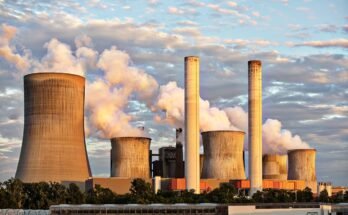In an era marked by rapid industrialization, technological advancements, and an ever-growing global population, the need for environmental protection and sustainability has never been more urgent. As human activities continue to strain natural resources and ecosystems, it is essential that we embrace practices that safeguard the environment while ensuring the well-being of future generations. This article explores the concepts of environmental protection and sustainability, their importance, and the role we all play in building a more sustainable world.
What is Environmental Protection?
Environmental protection refers to the measures taken to preserve and safeguard the natural environment from harm caused by human activities. It encompasses a wide range of actions aimed at reducing pollution, conserving resources, and protecting ecosystems. These actions can include everything from reducing carbon emissions, managing waste responsibly, and conserving biodiversity, to ensuring clean air, water, and soil.
At its core, environmental protection is about recognizing the finite nature of the planet’s resources and understanding that any harm we cause to the environment ultimately impacts our health, economy, and quality of life. For example, air pollution from industries not only degrades the environment but also leads to respiratory illnesses and exacerbates climate change. Likewise, deforestation disrupts biodiversity and contributes to the loss of species and habitats.
What is Sustainability?
Sustainability refers to the ability to meet the needs of the present without compromising the ability of future generations to meet their own needs. It is a holistic approach that integrates environmental, social, and economic considerations to create long-lasting and equitable solutions for both people and the planet.
The concept of sustainability is often described through three key pillars:
- Environmental Sustainability: This pillar focuses on maintaining the health of the planet by managing natural resources wisely, protecting ecosystems, and reducing environmental footprints. It includes practices such as using renewable energy, reducing waste, and preserving biodiversity.
- Social Sustainability: Social sustainability emphasizes the importance of equitable access to resources, opportunities, and a healthy environment for all people, regardless of their background or location. It also advocates for social justice, ensuring that everyone can thrive and live in harmony with nature.
- Economic Sustainability: Economic sustainability seeks to create a stable economy that can continue to function over the long term without depleting natural resources or causing environmental degradation. This involves promoting sustainable business practices, supporting green innovation, and investing in industries that contribute to both economic growth and environmental preservation.
The Importance of Environmental Protection and Sustainability
The importance of environmental protection and sustainability can be understood from several perspectives:
- Preventing Climate Change: One of the most pressing challenges of our time is climate change, driven by the accumulation of greenhouse gases in the atmosphere, largely due to human activities such as burning fossil fuels, deforestation, and industrial processes. Protecting the environment by transitioning to renewable energy sources, reducing waste, and promoting sustainable agriculture can help mitigate the impacts of climate change and avoid catastrophic consequences like extreme weather events, rising sea levels, and biodiversity loss.
- Conserving Natural Resources: The Earth’s resources, including water, minerals, and fossil fuels, are finite. Over-exploitation of these resources can lead to shortages and economic instability. By adopting sustainable practices such as recycling, water conservation, and efficient energy use, we can reduce the strain on these resources and ensure they are available for future generations.
- Promoting Health and Well-being: Environmental degradation directly impacts human health. Air and water pollution, for example, contribute to respiratory diseases, cardiovascular problems, and the spread of infectious diseases. By focusing on environmental protection, we can improve public health outcomes and create safer, healthier communities.
- Protecting Biodiversity: Biodiversity, or the variety of life on Earth, is crucial for maintaining ecosystem balance and resilience. The loss of species and habitats due to deforestation, pollution, and climate change can have devastating effects on the environment. Protecting biodiversity ensures that ecosystems continue to function and provide essential services like clean water, pollination of crops, and climate regulation.
Steps Toward a Sustainable Future
Achieving environmental protection and sustainability requires action at all levels—individual, corporate, and governmental. Here are some of the steps we can take:
1. Transition to Renewable Energy
Shifting from fossil fuels to renewable energy sources like solar, wind, and hydropower is critical to reducing greenhouse gas emissions. Individuals can install solar panels, while governments and businesses can invest in large-scale renewable energy infrastructure.
2. Reduce, Reuse, Recycle
Adopting a circular economy model helps to minimize waste by reducing consumption, reusing products, and recycling materials. Consumers can play a role by choosing products with minimal packaging, buying sustainable goods, and recycling waste responsibly.
3. Conserve Water
Water is an essential resource that is becoming increasingly scarce in many parts of the world. Conserving water through efficient irrigation systems, reducing water waste, and using water-saving appliances can help ensure this vital resource is available for all.
4. Support Sustainable Agriculture
Sustainable farming practices, such as crop rotation, agroforestry, and the use of organic fertilizers, can improve soil health and reduce the environmental impact of agriculture. Supporting local, organic farmers helps reduce the carbon footprint of food production.
5. Protect Natural Ecosystems
Protecting forests, wetlands, oceans, and other ecosystems is vital for preserving biodiversity and ecosystem services. Supporting conservation efforts, such as creating protected areas and reducing deforestation, helps maintain a healthy planet.
6. Advocate for Policy Change
Governments play a crucial role in environmental protection and sustainability. Advocating for policies that promote environmental conservation, such as carbon pricing, renewable energy subsidies, and environmental regulations, can create systemic change at a national or global level.
Conclusion
Environmental protection and sustainability are not mere buzzwords but essential principles for ensuring the long-term health and prosperity of our planet. As individuals, businesses, and governments, we all have a responsibility to protect the environment and adopt practices that contribute to a more sustainable future. By making conscious decisions and taking meaningful actions today, we can safeguard natural resources, mitigate climate change, and build a world where both people and the planet thrive.



